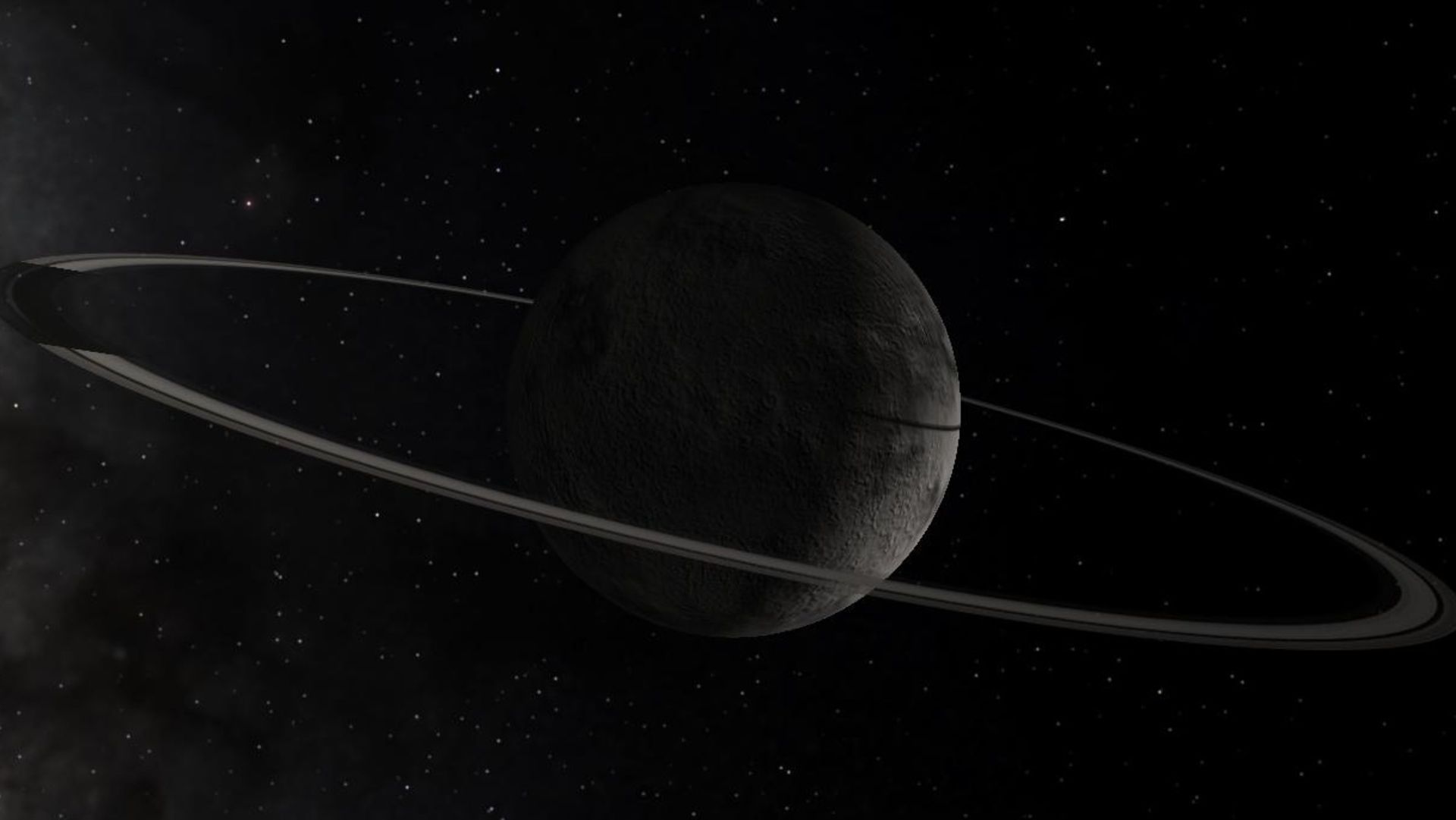🪐 Forming rings discovered around an object in our Solar System
Follow us on Google News (click on ☆)
A team of Brazilian astronomers recently made a remarkable discovery while analyzing observations from the Pico dos Dias Observatory. Around Chiron, this icy body discovered in 1977, they identified four distinct ring structures accompanied by diffuse material. These rings are located at varying distances from the object's center, ranging from 270 to 1400 kilometers (about 170 to 870 miles), with the fourth ring showing signs of instability that will require additional observations. This particular configuration offers scientists a unique opportunity to study the dynamics of ring systems.

Representation of Chiron with its rings in the Celestia software
Credit: Celestia/Wikimedia Commons
Chiron belongs to the category of centaurs, these hybrid objects that exhibit characteristics halfway between comets and asteroids. Orbiting between Saturn and Uranus, this body approximately 200 kilometers (about 125 miles) in diameter is primarily composed of rock, water ice, and organic compounds. The presence of rings around such an object demonstrates that accretion phenomena and the formation of circular structures are not limited to the major planets of our stellar system.
What makes this discovery particularly significant is that for the first time, astronomers are observing a ring system in the process of formation. By comparing data from 2023 with previous observations dating back to 2011, researchers noted a rapid evolution of these structures. The rings, probably composed of water ice and rocky materials, could result from a collision between Chiron and another celestial body, thus creating a dynamic environment in transformation.
The implications of this discovery extend far beyond the specific case of Chiron. As explained by astronomer Braga Ribas from the Federal University of Technology of Paraná, this evolving system constitutes a natural laboratory for understanding the mechanisms that govern the formation of rings and satellites around small celestial bodies.
These processes could illuminate our understanding of various types of disk dynamics observed in the Universe, from forming planetary systems to distant galaxies.
Centaurs: these hybrid celestial objects
Centaurs represent a particular class of trans-Neptunian objects that orbit between Jupiter and Neptune. Their name evokes their dual nature, combining characteristics typical of asteroids and comets.
These icy bodies often exhibit cometary activity when they approach the Sun, developing tails of gas and dust, while maintaining a structure closer to that of asteroids. Their composition generally includes volatile ices that can sublimate under the effect of solar radiation.
The study of centaurs offers valuable clues about the conditions that prevailed in the outer Solar System during its formation. Their unstable orbit indicates that they might originate from the Kuiper Belt, that region beyond Neptune populated by icy bodies.
The discovery of rings around Chiron reveals that these objects can develop complex systems, challenging our traditional understanding of planetary structure formation.
The formation of planetary rings
Planetary rings generally form from matter orbiting around a celestial body, held in place by gravitational forces. Several mechanisms can explain their appearance, including collisions between objects, the disintegration of satellites, or the capture of interplanetary matter.
The stability of a ring system depends on many factors, notably the mass of the central object, the distance of the rings, and interactions with other bodies. Tidal forces play an essential role in defining the Roche limit, that zone where gravitational forces prevent the accretion of matter into satellites.
Chiron's rings have the particularity of being observed during their active formation phase. This evolving dynamic allows astronomers to study in real time the collision, aggregation, and dispersion processes that shape these structures.
The composition of rings varies according to their origin: they can contain ice particles, rock, or organic materials. Their spectroscopic study reveals valuable information about the history of collisions and the physico-chemical processes at work in the Solar System.